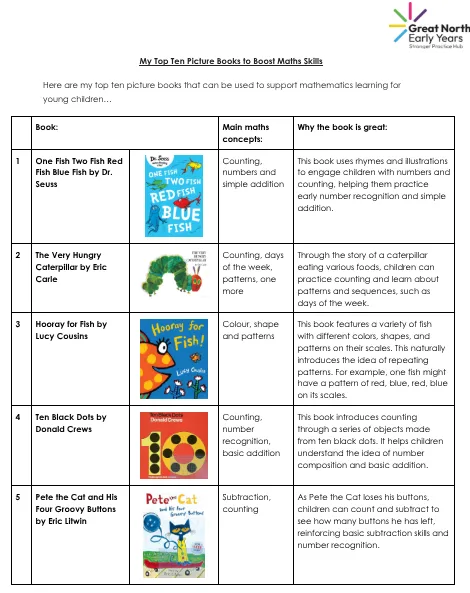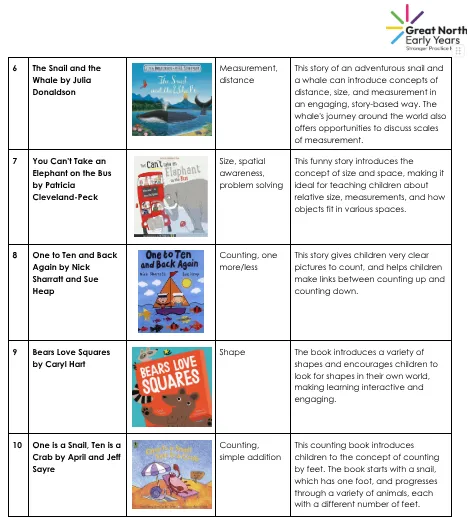Counting on Stories: How Picture Books Can Boost Maths Skills
Katrina Di Girolami, The Great North Early Years Stronger Practice Hub Lead
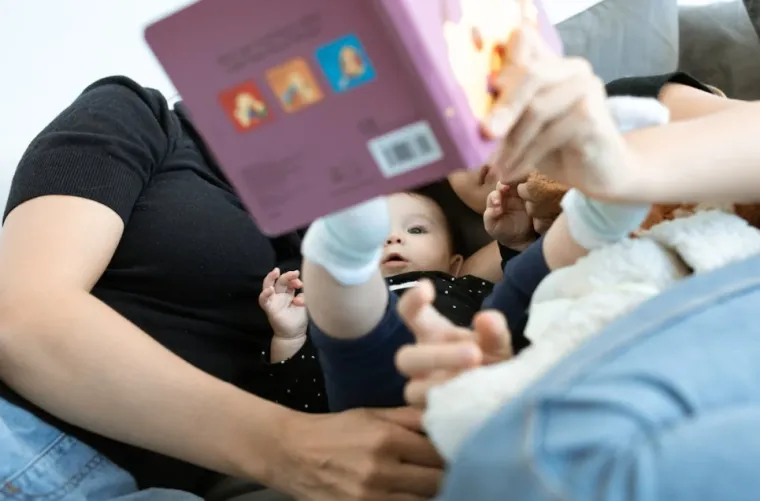
Picture books can be a powerful tool in supporting mathematical learning in several ways, as they blend narrative with visual elements to engage young learners. Picture books can introduce children to a variety of different concepts and can be used throughout children’s early years to introduce and deepen understanding. They are also a strong asset to provide frequent and varied opportunities to build and apply mathematical understanding and to aid children in developing a positive attitude and interest in maths which is highlighted in the Educational Programmes section (pages 9-11) of the EYFS Statutory Framework.
Educational Programmes are “high level curriculum summaries which set out what should be taught in settings for each area. They must involve activities and experiences that enable children to learn and develop, as set out under each of the areas of learning.” - EYFS Statutory Framework.
The curriculum summary for maths is, “Developing a strong grounding in number is essential so that all children develop the necessary building blocks to excel mathematically. Children should be able to count confidently, develop a deep understanding of the numbers to 10, the relationships between them and the patterns within those numbers. By providing frequent and varied opportunities to build and apply this understanding - such as using manipulatives, including small pebbles and tens frames for organising counting - children will develop a secure base of knowledge and vocabulary from which mastery of mathematics is built. In addition, it is important that the curriculum includes rich opportunities for children to develop their spatial reasoning skills across all areas of mathematics including shape, space and measures. It is important that children develop positive attitudes and interests in mathematics, look for patterns and relationships, spot connections, ‘have a go’, talk to adults and peers about what they notice and not be afraid to make mistakes.” - EYFS Statutory Framework.
There are many ways that picture books can be used effectively to develop and secure Mathematical understanding:
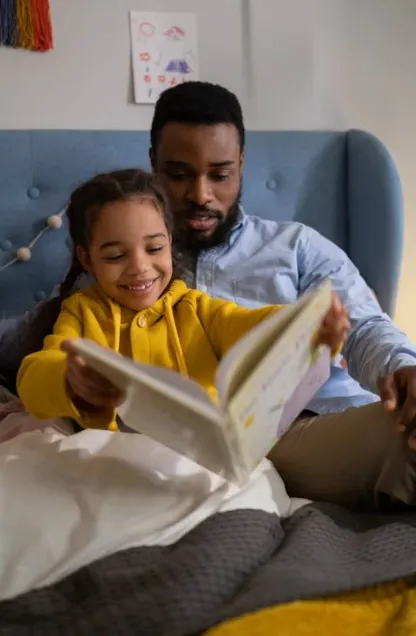
1. Introducing Mathematical Concepts
Picture books often incorporate basic mathematical concepts such as counting, shapes, patterns, size, addition, subtraction and comparisons within their stories. Books like ‘One Fish Two Fish Red Fish Blue Fish’ by Dr. Seuss or ‘Ten Black Dots’ by Donald Crews can introduce numbers, counting, and sequences in a fun, accessible way.
2. Building Number Sense
Stories that focus on counting, addition, subtraction, or even division can help build foundational maths skills. For example, ‘The Very Hungry Caterpillar’ by Eric Carle provides opportunities to explore counting, one more and addition in an engaging way.
3. Visualising Mathematical Ideas
Illustrations provide a visual representation of mathematical concepts, making them easier for young children to see patterns, make connections and begin to understand. For example, books that illustrate patterns or symmetry, like ‘Hooray for Fish’ by Lucy Cousins, allow children to see patterns in many different ways.
4. Encouraging Problem Solving
Picture books often pose open-ended questions that encourage children to think critically and creatively. This can help them develop problem-solving skills and explore different approaches to solving a problem.
5. Incorporating Mathematical Vocabulary
Picture books can introduce and reinforce maths-specific vocabulary. By reading books that use mathematical language such as "greater than," "equal," "more," or "less," children can start to understand and use the vocabulary necessary to discuss mathematical ideas.
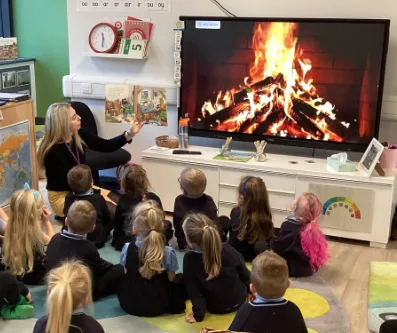
6. Collaborative Learning
Reading picture books can be a shared experience that promotes discussions and collaboration among children. This can help them learn from each other, share their ideas, and develop their understanding of mathematical concepts.
7. Fostering a Positive Attitude Toward Maths
Engaging stories can help build a positive association with maths. Picture books that emphasise fun, curiosity, and discovery help children feel more confident and curious about mathematical exploration.
The Education Endowment Foundation (EEF) is a UK-based organisation focused on improving educational outcomes for students, particularly in disadvantaged communities. The Early Mathematics Evidence Store includes evidence-informed approaches and practices to support mathematics in the Early Years. All of these approaches can be supported by the use of carefully selected picture books.

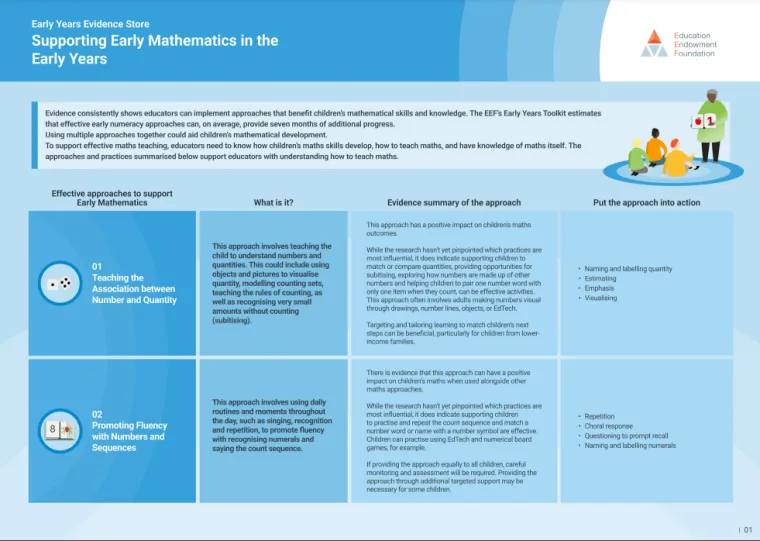
You can download the above evidence summaries by clicking here.
In conclusion, picture books offer a rich, interactive way to support and boost mathematical learning by bringing concepts to life for young learners. They help to foster an enjoyable learning experience that children can relate to both in and out of the classroom.
